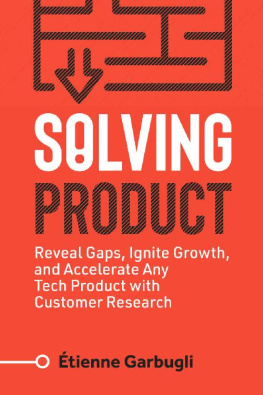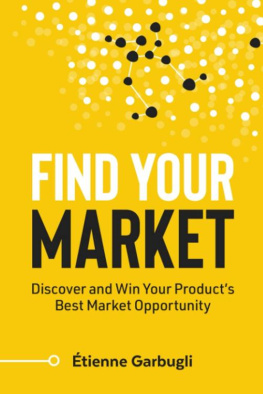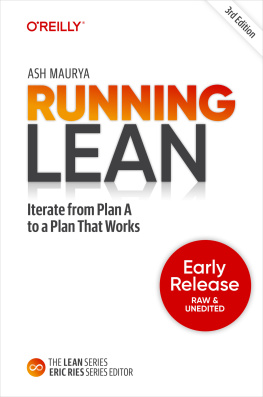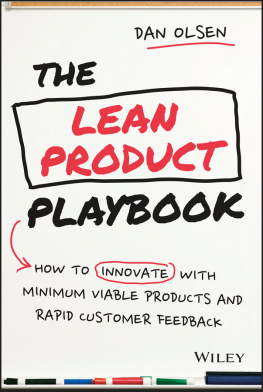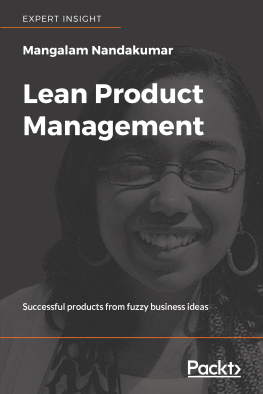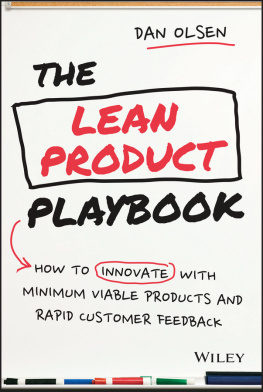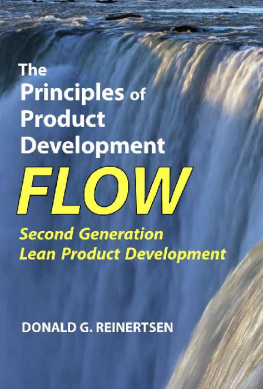tienne Garbugli
Solving Product
Reveal Gaps, Ignite Growth, and Accelerate Any Tech Product with Customer Research
First published by tienne Garbugli 2020
Copyright 2020 by tienne Garbugli
All rights reserved. No part of this publication may be reproduced, stored or transmitted in any form or by any means, electronic, mechanical, photocopying, recording, scanning, or otherwise without written permission from the publisher. It is illegal to copy this book, post it to a website, or distribute it by any other means without permission.
tienne Garbugli has no responsibility for the persistence or accuracy of URLs for external or third-party Internet Websites referred to in this publication and does not guarantee that any content on such Websites is, or will remain, accurate or appropriate.
Designations used by companies to distinguish their products are often claimed as trademarks. All brand names and product names used in this book and on its cover are trade names, service marks, trademarks and registered trademarks of their respective owners. The publishers and the book are not associated with any product or vendor mentioned in this book. None of the companies referenced within the book have endorsed the book.
First edition
ISBN: 978-1-7771604-3-2
Proofreading by Joy Sellen
Typesetting by Andrew Forteath
Cover art by Katarina Naskovski
This book was professionally typeset on Reedsy
Find out more at reedsy.com
To my mother.
For giving me the courage to follow my convictions.
Contents
Acknowledgement
During the writing of this book, I spoke to the worlds leading experts on some of the customer research techniques discussed in this book, and many of the product leaders and entrepreneurs who use these techniques daily. The best ideas in this book are from them.
Many of the techniques and ideas covered here are detailed in full in their books, talks, and blogs, which I invite you to check out. Youll find links and references to their work at the end of the book.
Every component of this approach is well known to some particular field of research or industry. They have just never been put together into a coherent method before.
Preface
If all you have is a hammer, everything looks like a nail.Abraham Maslow, Psychologist
Experience is a funny thing.
The more we acquire of it, the more we become partial to doing things in certain ways.
Consciously or not, we start prioritizing the strategies and tactics that have made us successful before.
Because of this, we rarely take the time to consider all options when working on products.
If were used to using analytics to measure how features impact customers, then well discount the value of learning from small groups of users.
If were used to interviewing customers to understand their needs and reasoning, experiments and quantitative research might get neglected.
Our experienceor our teams experiencecreates our blind spots, and unfortunately, blind spots are where a lot of the magic happens.
When I joined LANDR, a SaaS music mastering service, the founders and the early team had done a great job validating the need, creating valuable technology, building a brand, and attracting capital. Now growth was expected.
There were just a few problems. It wasnt clear:
- who benefited the most;
- what was valued and what wasnt;
- why users bought or didnt;
- why users stuck around or didnt; or
- who the users really were in the first place.
The business was growing, but blind spots were hindering its growth.
The team was already stretched thin building the product, so a key part of my role became systematically seeking out information gaps, answering questions around product use, challenging assumptions.
No stone was left unturned.
The more we learned, the faster we grew. Less than two years in, revenue had grown by 4x.
Today, well after my time at LANDR, I often speak with entrepreneurs. Too often, when I ask questions about their users or the value that their product delivers, I get fuzzy answers.
It turns out that, despite it being a proven way to grow a product, most businesses struggle with systematically learning about their users and customers.
I wrote Solving Product to share a method designed to drive new growth, step by step.
The book was written to help product teams, entrepreneurs, innovators, and marketers uncover the gaps in their business models, find new avenues for growth, and systematically overcome their next hurdles.
It covers the five stages in the life cycle of a product business:
- Idea: Is this idea worth pursuing?
- Startup: Will it work?
- Growth: Can it scale?
- Expansion: How big can it get?
- Maturity: How can we find more growth?
No matter the stage, were always looking for growth.
Solving Product will help you unlock that growth.
How to Use This Book
What is wanted is not the will to believe, but the will to find out, which is the exact opposite. Bertrand Russell, Philosopher
Solving Product is a different kind of book.
It has been structured in a way so you can put it on your desk and thumb through it when youre facing a growth challenge for your business.
You can read it from beginning to end, or jump around as need be.
The Table of Contents and the exercises in Chapter #2 have been designed to help you navigate to the appropriate content.
I hope you enjoy this book, I really enjoyed writing it. At the end, youll find my email address, and Id love to hear what you thought of it.
-tienne
I
Inception
Chapter 1 Introduction
Learning and innovation go hand in hand. The arrogance of success is to think that what you did yesterday will be sufficient for tomorrow. William G. Pollard, Physicist
Its just not working.
Julie was sitting in a dark office with her two co-founders.
She had called for an emergency, partner-only, meeting after another hectic day.
Now, well after working hours, the co-founders could hear their voices echo across Demotos empty 30,000 square feet office.
Eight months ago, they had raised a large funding round based on their impressive growth trajectory.
Ever since the raise, the partners had spent every waking hour recruiting and hiring the best people they could find.
It seemed like they were making all the right moveshiring, marketing, productyet if you really looked under the hood, the business had barely grown.
Sure, they were able to acquire a lot more users than before, sales and revenue had grown significantly, but nothing they had done had really improved customer retention.
Even worse, a growing number of customers were cancelling their accounts.
At their current burn rate, and with 150 employees now on payroll, the partners knew they had to start thinking about the next round of funding. They also knew that, no matter how they positioned it, investors would see right through the issues.
For weeks, customer retention had been on their minds, but with all the new people coming in, they knew better than to sound the alarm. The last thing they wanted was for top talent and investors to get worried.
Quietly, they had asked key staff to dig into customer feedback, speak with users, research the competition, and read through years of support tickets.
To improve the product, they had also prioritized features they felt could improve retention.
The analysts had come back empty-handed. Customers loved Demotos brand and product. Sure, there were bugs, but all products have them. It was unlikely that bugs were holding back growth this much.

